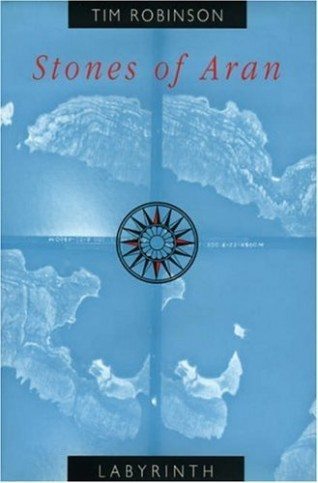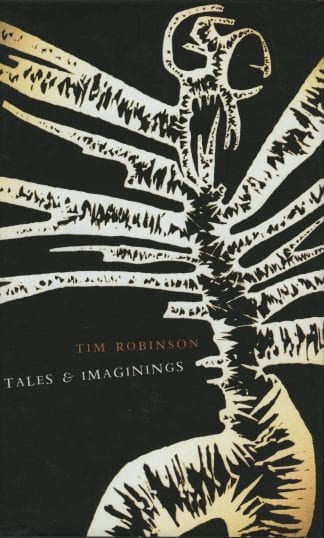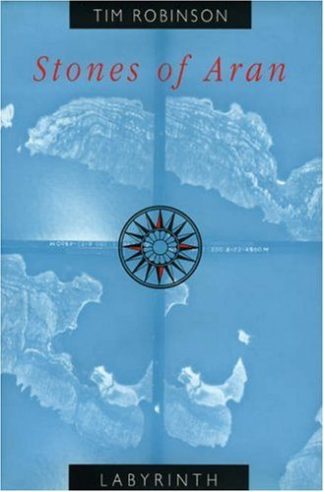
Stones of Aran
Labyrinth
By: Tim Robinson
Publication Date: October 1995
€100.00
Stones of Aran: Labyrinth by Tim Robinson
OUT OF PRINT, EBOOK ONLY
Like J.M. Synge almost a century before him, Tim Robinson portrays the inner and outer life of a landscape and its inhabitants. Encyclopedia of myth and reality, herbal, love-letter, missal, jest-book, anthology of cultural responses – Stones of Aran juggles modes from page to page. Its apparent inexhaustibility is borrowed from just one scrap of the Earth’s surface: Arainn, the largest of the three Aran islands, off Ireland’s west coast. The first volume, Pilgrimage, led the reader around the coastline, dazzled and enchanted by the complex interplay of rock and ocean. Labyrinth concludes this microscopic mission, opening up the interior and merging cosmic themes with the utterly personal. By the end, the island is mysteriously returned to itself, untrodden and unread.
Stones of Aran: Labyrinth is a companion volume to Stones of Aran:Pilgrimage (1986), the acclaimed first step of a magisterial survey. Nine years on Robinson completes his quest.
‘One of the most original, revelatory and exhilarating works of literature ever produced in Ireland.’ – Michael Viney, The Irish Times
‘Robinson’s Aran will, inevitably, become part of the general myth. It is a wonderful achievement.’ – Seamus Deane, London Review of Books
‘Wholly delightful… the natural world has seldom been better described. In an age of rigid specialisms and arcane jargon, he is a polymathic autodidact who restores the honourable original meanings of amateur and dilettante.’ – Patrick Curry, Times Literary Supplement
‘Stones of Aran warms cold geology into fervent life. Robinson’s chosen form is wholly irresistible.’ – Jonathan Keates, The Observer
‘Taken together, Tim Robinson’s two volumes on Aran constitute one of the major Irish prose texts of this century in any genre … Within the lofty architecture of this writing, many of our cherished conceptions of place and identity find their apotheosis and are accordingly transcended.’ – Sean Lysaght, The Irish Review
‘A triumph of literary and topographical excavation. His comments on every facet of Aran life are authoritative and absorbing and his individual approach to the subject has turned the whole thing into an idiosyncratic masterpiece.’ – Patricia Craig, New Statesman
‘Humble and profound view of the insight of a popular island.’ – Customer review
ABOUT THE AUTHOR
TIM ROBINSON, map-maker and writer, was born in England in 1935. He studied mathematics at Cambridge and worked as a teacher and artist in Istanbul, Vienna and London. In 1972 he moved to the West of Ireland and began writing and making maps. Stones of Aran: Pilgrimage, published in 1985, won the Irish Book Award Literature Medal and a Rooney Prize Special Award for Literature in 1987. Stones of Aran: Labyrinth appeared in 1995, and Setting Foot on the Shores of Connemara was published in 1996. My Time in Spacewas published in 2001. A collection of stories and speculative essays, Tales and Imaginings, was published by Lilliput in 2002. He edited and introduced the widely acclaimed Connemara After the Famine by Thomas Colville Scott (Lilliput, 1995).
Out of stock
| ISBN | 9781874675501 |
|---|
| Weight | 1 kg |
|---|---|
| Dimensions | 160 × 240 mm |
| Publication Date | October 1995 |
| Format | Hardback, 500pp |





Lilliput Press –
“Anyone who appreciates the the slow topographic unfolding of place (in particular, the Aran Islands) through history, literature, myth, botany, geology, language will find their time well-spent in the company of this wonderfully dense and thoughtful exploration.”
Lilliput Press –
“Tim Robinson first moved to Aran, an island 8 miles long and 2 miles wide, located just off the west coast of Ireland, near Galway Bay, in 1972. He wrote his first book on the island, Stones of Aran: Pilgrimage which recounts his walk around the island’s perimeter, with, for sure, plenty of diversions. I have previously reviewed “Pilgrimage” at Amazon, and said, in part that: “He ranges over disciplines as varied as cosmology, geology, botany, sociology, history, linguists, economics, anthropology and literature.” At first glance, one would believe that one book on such a small island would be sufficient. But no, Robinson has so much more to say in “Labyrinth,” as he examines the island’s interior. One aspect is the subject sentence, for he is documenting a vanishing way of life. Elegies unawares relates to his description of Evelyn’s shop, the last one on the island, and he notes that he no sooner described it than she retired, and the last shop closed.
“Bad reviews” can often provide the motivation for reading a book, even more than good ones. Robinson includes a bad review of “Pilgrimage” in “Labyrinth,” which is written from the point of view of some impossible academic twit, who objects to Robinson’s “polymath” generalist approach to knowledge, as opposed to the “rigors” of narrow specialization. The review reeks of condescension: “Such failings are only to be expected; a multidisciplinary study demands the modesty of teamwork, and the best that can be said of Robinson’s attempts is that he manages to fall between more professorial chairs than most amateurs.” Or, “Striding roughshod over the bounds of specialisms and genres, it seems to imply that some overarching meaning of it all is going to be revealed… Robinson ends up being nothing in particular.” Of course, one assumes that the review is not apocryphal, but even if it is, Robinson captures the essence of the academic specialists proudly defensive of their turf against the generalist.
Robinson “nailed” the tourist also, of a particular nationality, who came to the island, and said: “We would like to see something, if there is anything to be seen!” Robinson retorts: “That what was to be seen was exactly this grudging parceling-out of barrenness, was more than I could explain.”
As in “Pilgrimage,” Robinson’s prose and insights continue to dazzle. Consider: “Time, in such places as London, is a disease of the wristbone; one see sufferers glance anxiously at the glittering lump. I had come to Aran to escape the infection, and bitterly resented its outbreak here.” Or: “The sun, on a rococo stage of lavishly gilded cirrus, was retiring with the bravura of a diva well practiced in farewell performances.” And then he goes on to give a concise and accurate description of “the green flash” at sunset. Or: “If one waits by the well until the turbidity of the mind settles, then the scratching of a bramble stirred across the rock gives one ground to stand on…”
Robinson concludes the book on a typically strong, yet self-deprecating note: “The virtue of reality is that no understanding is equal to it; no walk, however labyrinthine, wears out the stone… Perhaps when I open it (his book) in seven year’s tome it will tell me what I had hoped to learn by writing it, how to match one’s step to the pitch and roll of this cracked stone boat of a cosmos; but for the time being I cannot read it.”
Robinson has written another masterpiece. Kudos to the New York Review Books Classics for re-issuing it.” JOHN JONES
Lilliput Press –
“10 stars emerging in the landscape
humble and profound view of the insight of a popular island.
history, you can travel in your armchair” JOHAN STELLER